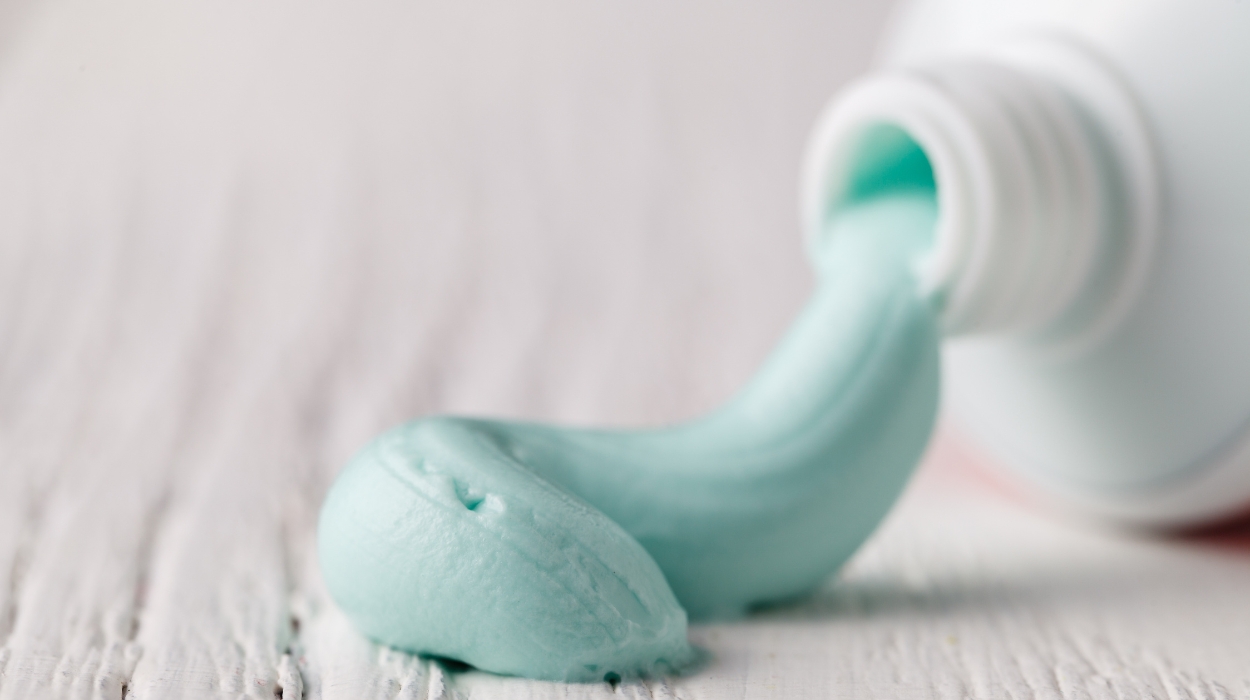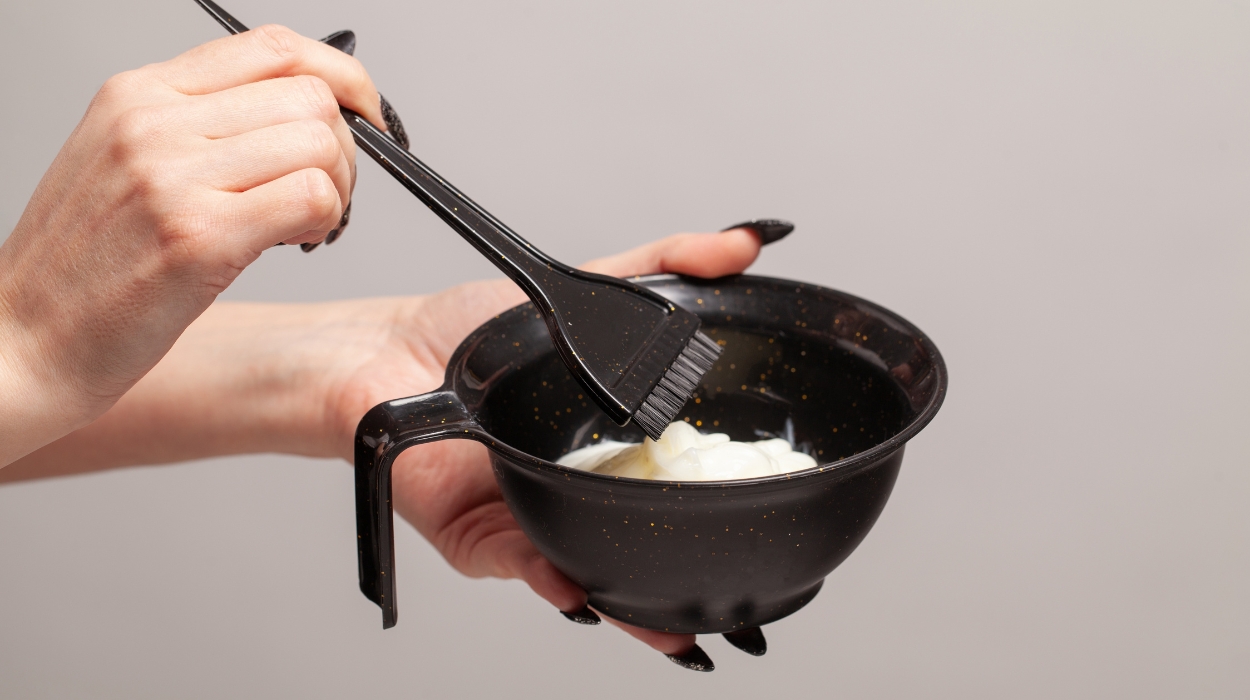 Expert's opinion
Expert's opinion
Expert's opinion
The article is a subjective view on this topic written by writers specializing in medical writing.
It may reflect on a personal journey surrounding struggles with an illness or medical condition, involve product comparisons, diet considerations, or other health-related opinions.
Although the view is entirely that of the writer, it is based on academic experiences and scientific research they have conducted; it is fact-checked by a team of degreed medical experts, and validated by sources attached to the article.
The numbers in parenthesis (1,2,3) will take you to clickable links to related scientific papers.
How To Get Hair Dye Off Skin No Stress, No Mess In 2024

Dyeing your hair can be a fun and exciting way to express yourself, but the process can be messy — and sometimes, you end up with hair color all over your skin. Don’t worry; it’s fairly easy to prevent hair dye stains, which are also easy to remove if preventative measures don’t work. This article will discuss how to get hair dye off your skin.
How To Remove Hair Dye From Skin?
- Dish soap and baking soda.
- Toothpaste.
- Alcohol or hydrogen peroxide.
- Lemon juice.
How To Get Hair Dye Off Skin: 4 Best Ways
Accidents happen, and sometimes hair dye can end up on your skin. Don’t worry! There are various methods to remove hair dye stains from your skin in only 2 minutes, with more stubborn stains taking a little longer.
Dish Soap And Baking Soda
Combine equal parts of both ingredients to create a paste. Gently scrub your dyed skin with this paste using a soft cloth or cotton pad. Rinse with water and check the results. You can repeat this process if the stain persists, but be sure to moisturize your skin afterward — both dish soap and baking soda can be drying. This is especially true if you have dry skin, to begin with.
Toothpaste

Another dye removal method is using toothpaste that doesn’t contain whitening agents.[1] Apply a small amount of toothpaste on the stained areas and gently rub it in a circular motion using your finger or a soft cloth. Rinse the area with water, and if necessary, repeat the process until the dye is gone.
Alcohol Or Hydrogen Peroxide
Rubbing alcohol or hydrogen peroxide[2] can also be a useful hair dye remover from the hands or skin. Soak a cotton ball with either rubbing alcohol or hydrogen peroxide and gently dab it onto the stained skin area. Make sure to be cautious around the eyes and avoid overuse, as this method can be harsh on the skin. Moisturize the area afterward to prevent dryness.
Lemon Juice
For help from stubborn stains, you can try using lemon juice as a hair dye remover. Squeeze some fresh lemon juice onto cotton balls and rub gently onto the stained portion of your skin. Wait a few minutes, but don’t let it dry out completely before rinsing it with water. Be mindful that lemon juice can make your skin more sensitive to sunlight, so avoid sun exposure after using this method.
Remember, it’s always best to use gentle techniques and care for your skin afterward. Don’t be too harsh or scrub aggressively, as this might irritate your skin further.
How Long Does Hair Dye Stay On Skin?
Typically, hair dye stains can last anywhere from a few hours to a few days. Most temporary hair dyes will wash off your skin easily with just a little bit of soap and water. However, some stains from semi-permanent and permanent hair dyes might take a little more effort to remove. The good news is that, with the right techniques, you can significantly reduce the amount of time the hair color stays on your skin.
To better understand how long hair dye stains persist on the skin, it is essential to know the different types of hair dyes and how they interact with the skin. Temporary dyes are usually easier to remove since they only coat the hair’s outer layer without penetrating the shaft. Semi-permanent dyes may last longer, while permanent dyes have the strongest bond to hair and skin.
Remember that everyone’s skin is different, and what might work for one person might not work for another. If a stain is persistent, consulting with a professional like a dermatologist or a licensed cosmetologist may be helpful. In any case, it’s essential to stay patient while working on removing hair dye from your skin and avoid using products that may irritate or harm it.
Is Hair Dye Bad For Your Skin?

Generally, hair dyes are safe to use, but some people can experience skin irritation or allergic reactions. Understanding the potential risks and taking precautions to protect your skin is essential.
Temporary and semi-permanent hair dyes are usually gentler on your skin, as they typically contain fewer chemicals than permanent hair dyes. However, some ingredients, such as para-phenylenediamine[3] in many permanent hair dyes, can cause allergic reactions.[3] This can include itching, redness, or even more severe complications in some cases.
To minimize the chances of skin irritation, it’s a good idea to perform a patch test before applying hair dye. You can do this by following these simple steps:
- Mix a small amount of hair dye according to the instructions on the package.
- Apply the dye to a small, discreet skin area, like behind your ear or inside your elbow.
- Wait for 48 hours to see if any reaction occurs. Avoid using that specific hair dye if you experience any irritation or signs of an allergic reaction.
Always remember to carefully follow the instructions provided on the packaging of your chosen hair dye, and never leave the dye on your skin for longer than recommended.
Tips To Prevent Staining Your Skin With Hair Dye
Here are some tips to help prevent staining your skin while dyeing your hair:
- Apply petroleum jelly: Before you start, apply a thin layer of petroleum jelly around your hairline, ears, and neck. This will create a barrier between your skin and the hair dye, making wiping away any accidental spills easier.
- Wear gloves: Make sure you’re wearing gloves while handling hair dye. This protects your hands from staining and helps prevent transferring the dye from your hands to your face or other areas of your skin.
- Be cautious: While applying the hair dye, be extra careful around sensitive areas such as your ears and neck. You can use a small brush to avoid accidental spills.
- Divide your hair: Separate your hair into smaller sections for better control during the application process. This way, you’ll be less likely to get the dye on your skin.
- Remove spills quickly: If you accidentally get some dye on your skin, quickly wipe it off with a damp cloth or a cotton ball soaked in rubbing alcohol. The sooner you remove dye from your skin, the less likely it will stain your skin.
- Rinse carefully: When it’s time to rinse the dye from your hair, lean your head back slightly to avoid the dye running down your face and neck. You can also use a handheld showerhead to have more control over where the water goes.
Following these tips can prevent your skin from staining during your next hair-dyeing adventure. Remember, it’s always better to be cautious and prepared to avoid any potential mishaps.
Treat Skin After Dye Removal
Now that you’ve successfully learned how to get hair dye off your skin, even after the dye has dried, it’s essential to take care of your skin’s health. Luckily, a range of personal care products and natural solutions can help.
First, gently wash the affected area with mild soap and water to ensure all dye residues are gone. This can help reduce any potential irritation on your skin.
Next, consider applying an alcohol-free toner to soothe and balance your skin. Many toners also provide added hydration that can be beneficial, especially after skin exposure to chemicals like hair dye.
It’s important to moisturize after removing hair dye from your skin. Look for a moisturizer[4] specifically designed for sensitive skin. Products containing natural ingredients like Aloe vera or olive oil for hair and skin tend to be soothing, helping to reduce any redness or irritation. Collagen supplements and hair, skin, and nail vitamins are also used to support skin health.
Lastly, pay attention to how your skin reacts over the next few days. If you notice any signs of allergic reactions[5] — such as redness, swelling, or itching — contact your healthcare provider.
Conclusion
Keep in mind that prevention is key. Applying a barrier, e.g., a cream or petroleum jelly, and wearing gloves can minimize the risk of getting hair dye on your skin in the first place!
Finally, remember that practice makes perfect. With time and experience, you’ll become more skilled at applying hair dye without creating a mess.
Now it’s time for you to put these tips into practice and enjoy a flawless hair dye experience. Good luck — and happy coloring!
+ 5 sources
Health Canal avoids using tertiary references. We have strict sourcing guidelines and rely on peer-reviewed studies, academic researches from medical associations and institutions. To ensure the accuracy of articles in Health Canal, you can read more about the editorial process here
- Chacko Kalliath, Archana Mukunda, Meera Kunjumon Pynadath, Venugopal, V. and Jithin Prethweeraj (2018). Comparison between the effect of commercially available chemical teeth whitening paste and teeth whitening paste containing ingredients of herbal origin on human enamel. Ayu, [online] 39(2), pp.113–113. doi:https://doi.org/10.4103/ayu.ayu_82_18.
- PubChem (2023). Hydrogen Peroxide. [online] @pubchem. Available at: https://pubchem.ncbi.nlm.nih.gov/compound/Hydrogen-Peroxide.
- Krishna Sumanth Mukkanna, Stone, N. and Ingram, J.R. (2017). Para-phenylenediamine allergy: current perspectives on diagnosis and management. Journal of Asthma and Allergy, [online] Volume10, pp.9–15. doi:https://doi.org/10.2147/jaa.s90265.
- Sethi, A., Kaur, T., Malhotra, S. and Gambhir, M.L. (2016). Moisturizers: The slippery road. Indian Journal of Dermatology, [online] 61(3), pp.279–279. doi:https://doi.org/10.4103/0019-5154.182427.
- Medlineplus.gov. (2016). Allergic reactions: MedlinePlus Medical Encyclopedia. [online] Available at: https://medlineplus.gov/ency/article/000005.htm.



